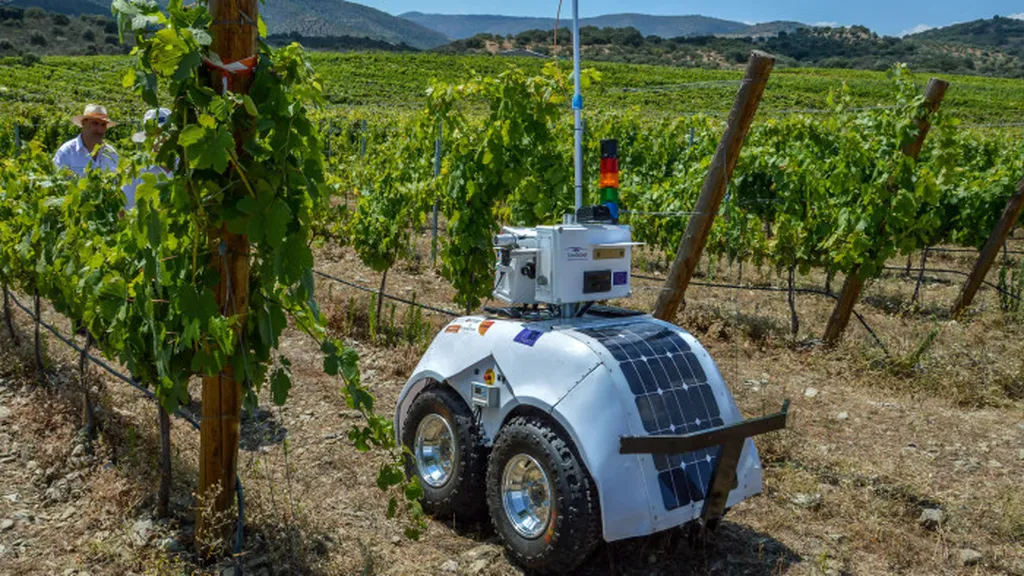The golden fields of California, long the breadbasket of America, are facing a conundrum that pits tradition against innovation. At the heart of the issue is a ban on autonomous farming equipment, a prohibition that dates back to the 1970s. While the rest of the world, and indeed other states, are embracing the future of farming with open arms, California’s farmers find themselves stuck in a time warp, unable to leverage technology that could revolutionize their industry.
The implications of this ban are far-reaching. New technology in agriculture has the potential to benefit both farmers and consumers alike. It could help automate farming processes, making them more efficient and leading to significant cost savings. Those savings, in turn, could be passed along to consumers in the form of less expensive products. But due to strict rules in California, technology like driverless tractors is banned, leaving farmers like Larry Jacobs, who has tilled the soil for 40 years, frustrated. “It’s crazy,” Jacobs told NBC Bay Area. “It doesn’t make any sense.”
The technology is indeed there, but it’s off the table for California farmers. Advancements in farming technology have given rise to tree-shaking machines that can collect nuts faster than any human, self-driving machines that can prepare soil for future crops, and even machines that can fire lasers at weeds. “The stuff that’s not fun to do, that’s going to go away,” Jacobs said. But if California farmers aren’t allowed to use this new technology, they’re going to face significant challenges.
The labor shortage is a pressing issue. The National Sustainable Agriculture Coalition reports that the number of farmers has declined from 2 million in 2017 to 1.9 million today. Part of the reason is that farmers are getting older, with the average age of U.S. farmers being 58.1 as of 2022, according to the USDA. This trend suggests that many farmers will be nearing retirement soon, with fewer younger farmers to fill the void.
California’s ban on autonomous agricultural equipment was put in place to ensure worker safety and has been supported by labor unions fearing job loss. However, these rules were established before much of today’s technology was invented. Farmers caught violating the ban face hefty fines, with “serious” violations potentially resulting in a $25,000 penalty.
In 2022, stakeholders petitioned the Occupational Safety and Health Standards Board to allow the use of driverless tractors and other autonomous agricultural equipment, arguing that certain banned equipment could actually improve worker safety. The state pledged to form a task force to review the issue, but that committee hasn’t issued any guidance since then.
The ban is not only hindering efficiency but also increasing the likelihood of injury. “There’s nothing for the robots to run into,” Jacobs explained. Without the help of technology, “Crops are getting left in the fields because people don’t have enough labor to get it done.” Moreover, driverless cars have been allowed in California for years, yet farmers can’t use similar technology on fields that aren’t occupied by vehicles and people.
The implications of this ban extend beyond California’s borders. The state produced 40% of the country’s vegetables and nearly 70% of its fruits and nuts in 2022, according to the USDA and the California Department of Food and Agriculture. With a projected decline in employment in the farming industry and a major shortage of farm laborers in the coming years, the ban on autonomous technology could lead to wasted crops, higher production costs, and higher food bills for consumers across the country.
Assemblyman Juan Alanis plans to work with lawmakers to try to lift the ban on autonomous farming equipment. “The longer that we wait or we sit on our hands, we’re going to have other states, other countries that are going to move forward with this because we’re stubborn,” he told NBC Bay Area. The future of farming in California hangs in the balance, with the potential for technology to drive the industry forward, attract the next generation of farmers, and ensure that the state remains America’s breadbasket.

